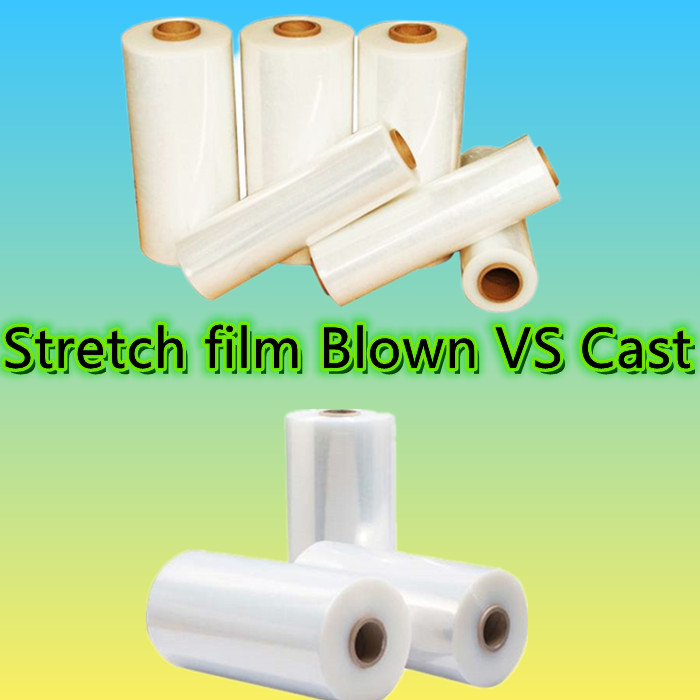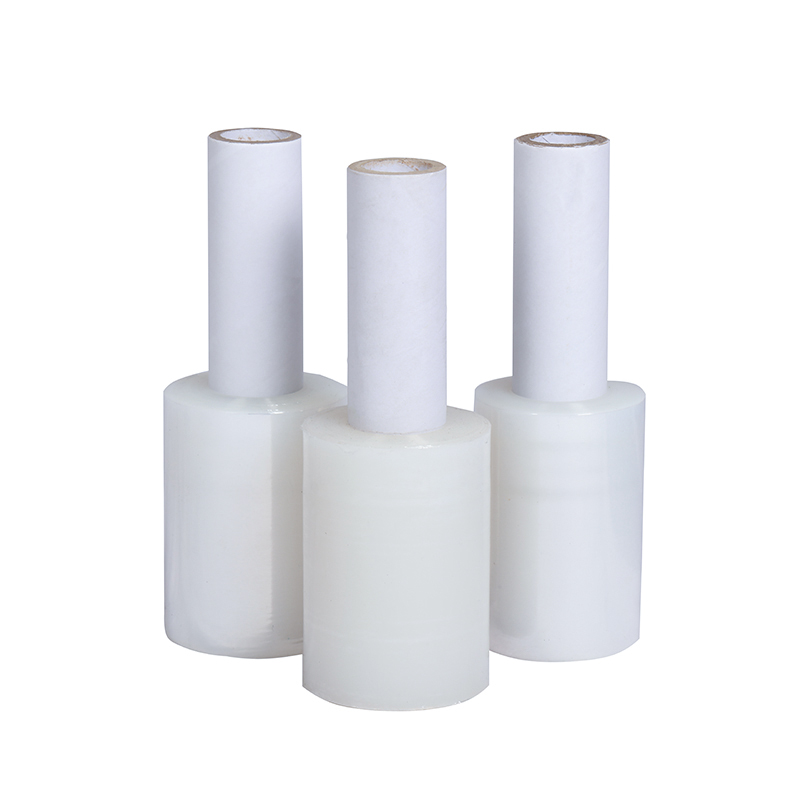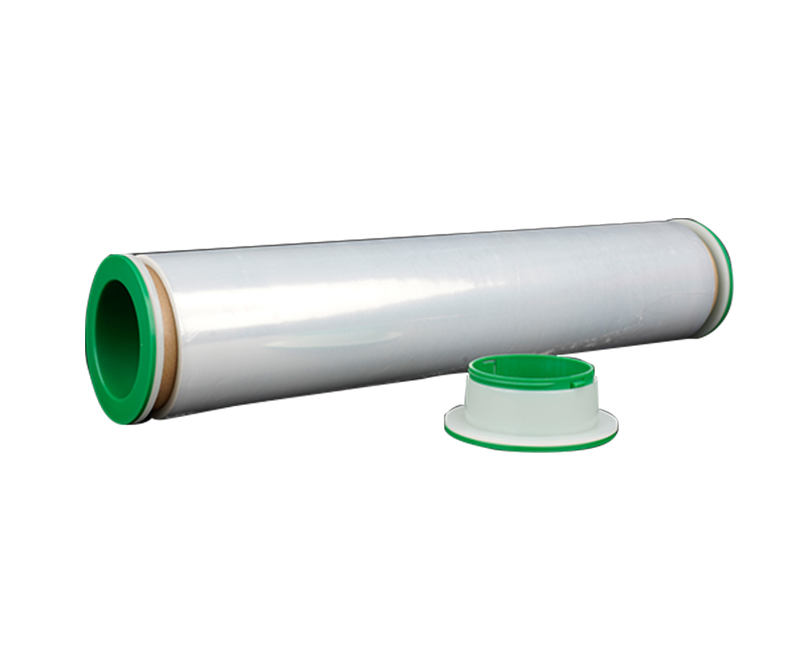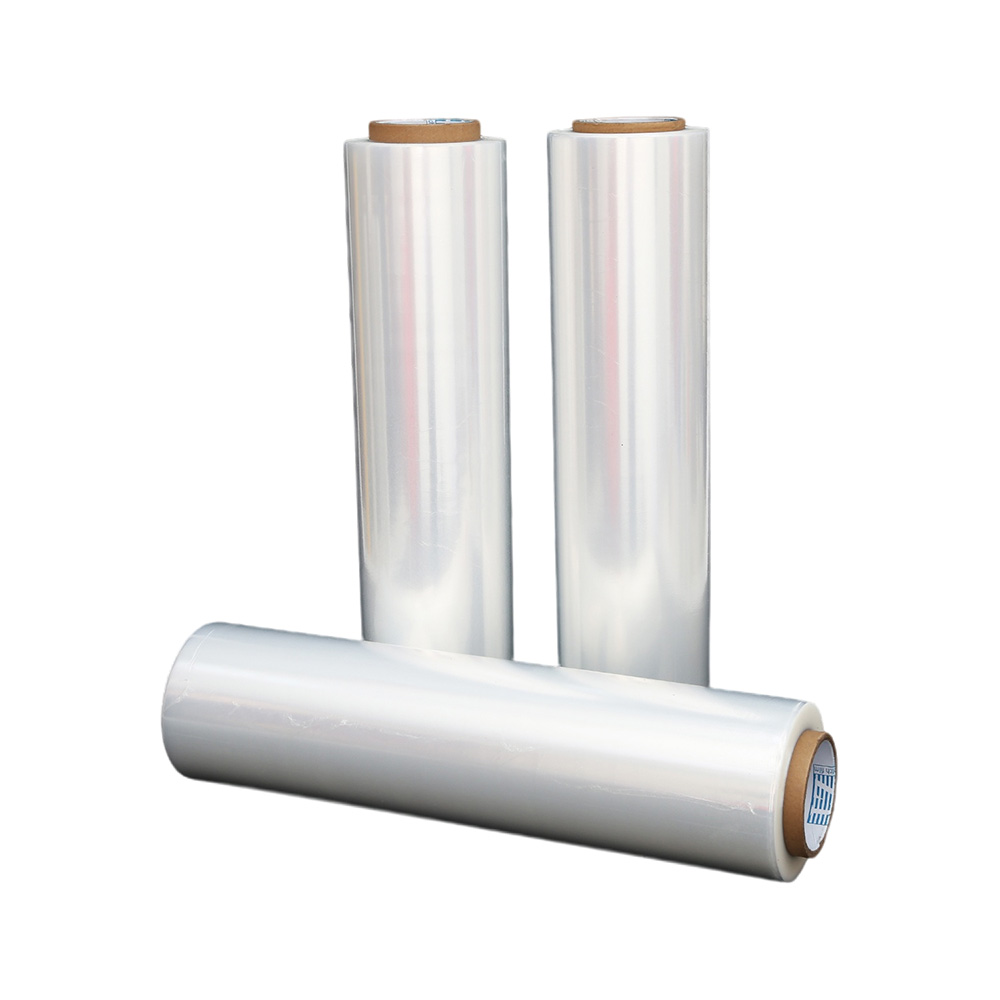Cast vs. Blown Stretch Film: Which is Better for Your Packag
Source:Cast vs. Blown Stretch Film: Which is Better for Your PackagTime:2025-03-12Visitors:
Stretch film, also known as stretch wrap or pallet wrap, is a cornerstone of modern packaging and logistics. Whether you’re securing a pallet of retail goods or protecting heavy construction materials, this versatile plastic film ensures your products stay safe during transport and storage. But not all stretch films are created equal. The two primary types—cast stretch film and blown stretch film—offer distinct advantages depending on your needs. So, how do you choose between them?
In this article, we’ll break down the differences between cast and blown stretch film, exploring their manufacturing processes, properties, applications, costs, and environmental impact. By the end, you’ll have the insights to decide which stretch film is best for your business—whether you prioritize clarity, strength, or cost-effectiveness. Let’s get started.
What is Stretch Film?
Before diving into the cast vs. blown debate, let’s define stretch film. It’s a highly stretchable plastic film, typically made from linear low-density polyethylene (LLDPE), used to wrap and secure goods. Stretch film provides load containment, keeping items tightly bound while protecting them from dust, moisture, and shifting. Its elasticity allows it to stretch around objects, creating a snug fit without adhesives.
The two main manufacturing methods—cast and blown—determine the film’s characteristics, from clarity to durability. Understanding these processes is key to choosing the right option.
Manufacturing Processes
Cast Stretch Film: Precision and Clarity
Cast stretch film is produced through a process called cast extrusion. Here’s how it works:
- Plastic resin (usually LLDPE) is melted and extruded through a flat die.
- The molten film is then stretched and cooled on chilled rollers, creating a smooth, uniform sheet.
- The result? A thin, consistent film with excellent clarity and a quiet unwind.
This method, often used by companies like Dongguan Zhiteng Plastic Product Co., Ltd. with advanced five-layer co-extrusion machines, ensures high-quality output. Cast film’s uniformity makes it a go-to for automated wrapping systems and high-speed production lines.
Blown Stretch Film: Strength Through Air
Blown stretch film takes a different approach, known as blown extrusion:
- Melted resin is extruded through a circular die, forming a tube or “bubble.”
- Air is blown into the bubble, stretching it vertically while it cools.
- The tube is collapsed into a flat film, wound onto rolls, and cut to size.
This process, while slower than cast extrusion, creates a tougher film with a slightly hazy appearance. The air-cooling method enhances molecular alignment, boosting strength and puncture resistance—perfect for rugged applications.
Properties and Performance: A Head-to-Head Comparison

The manufacturing process directly impacts how cast and blown stretch films perform. Let’s compare their key properties:
Clarity and Appearance
- Cast: Known for its crystal-clear finish, cast film is ideal when visibility matters. Need to scan barcodes or showcase products? Cast is your pick.
- Blown: Hazier and less transparent, blown film is better for concealing contents or when aesthetics aren’t a priority.
Strength and Durability
- Blown: Excels in puncture resistance and tear strength, making it the choice for heavy or sharp-edged loads like bricks or metal parts.
- Cast: Offers decent strength but is better suited for lighter, uniform loads like boxed retail items.
Stretchability
- Cast: Stretches further with less effort—up to 300% in some cases—maximizing coverage and reducing material use.
- Blown: Stiffer to stretch but provides superior load retention, keeping goods secure under tension.
Cling
- Cast: Typically has two-sided cling, which can cause pallets to stick together during storage or transport.
- Blown: Often features one-sided cling, reducing adhesion issues and making it easier to separate pallets.
Noise
- Cast: Unwinds quietly, a bonus in noise-sensitive environments like warehouses or retail settings.
- Blown: Louder during application, which might disrupt quiet workspaces.
Here’s a quick comparison table for reference:
Applications: When to Use Each Type
Choosing between cast and blown stretch film depends on your specific needs. Here’s a breakdown of their ideal use cases:
When to Use Cast Stretch Film
- Uniform Loads: Perfect for lightweight, evenly shaped items like boxes or consumer goods.
- High-Speed Wrapping: Its consistency and quiet unwind suit automated machines.
- Visibility Needs: Barcode scanning or product display? Cast’s clarity shines.
- Examples: Retail pallets, electronics, or food packaging (e.g., stretch film as a preservative wrap).
Imagine a warehouse shipping fragile electronics. Cast film’s clarity ensures barcodes are scannable, while its stretchability covers more with less material.
When to Use Blown Stretch Film
- Heavy or Irregular Loads: Handles sharp edges, heavy weights, or uneven shapes with ease.
- Outdoor Storage: Its durability resists punctures and weathering.
- High Load Containment: Keeps unstable loads secure during long hauls.
- Examples: Construction materials, lumber, or industrial equipment.
Picture a shipment of jagged metal pipes. Blown film’s toughness prevents tears, ensuring the load arrives intact.
Cost Considerations
Cost is a major factor in any packaging decision. Here’s how cast and blown stack up:
- Production Costs: Cast film is generally cheaper to manufacture due to its faster, more efficient process. This often translates to a lower price per roll.
- Application Costs: Blown film, while pricier upfront, may save money long-term for heavy-duty needs by reducing breakage or rewrapping.
For budget-conscious businesses, cast film is a cost-effective default. But if durability is non-negotiable—like for shipping overseas—blown film’s higher initial cost could be worth it.
Environmental Impact
Sustainability is increasingly important in packaging. Both cast and blown stretch films are recyclable, but there are nuances:
- Material Use: Cast film’s higher stretchability means less plastic per pallet, reducing waste. Companies like Dongguan Zhiteng Plastic Product Co., Ltd. emphasize this with specs like 0.006mm–0.08mm thickness.
- Eco-Friendly Trends: Innovations like down-gauging (thinner films) and bio-based stretch films are gaining traction. Blown films, with their strength, can also be down-gauged without sacrificing performance.
- Certifications: Look for films meeting standards like ROHS (e.g., Zhiteng’s green electrical wire film passes SGS tests).
Both types can align with eco-goals, but cast’s efficiency and blown’s durability offer different paths to sustainability.
Choosing the Right Stretch Film: A Decision Framework
So, which stretch film is right for you? Consider these factors:
- Load Type: Lightweight and uniform? Go cast. Heavy or sharp? Choose blown.
- Environment: Indoor storage favors cast’s clarity; outdoor or rough handling calls for blown’s toughness.
- Budget: Tight margins lean toward cast; long-term durability justifies blown.
- Application Method: Manual wrapping might benefit from cast’s quietness or blown’s cling control; machines prefer cast’s consistency.
Practical Tips
- Test Both: Run trials with sample rolls to see which performs best for your loads.
- Consult Experts: Companies like Dongguan Zhiteng Plastic Product Co., Ltd. (contact: zt@dgztpacking.com) can tailor solutions to your needs.
- Prioritize Needs: Clarity for retail? Strength for shipping? Define your must-haves.
Innovations in Stretch Film Technology
The stretch film industry isn’t standing still. Here are trends to watch:
- Pre-Stretched Films: Reduce effort and material use (offered by Zhiteng under “Pre-Stretch Film”).
- Colored Films: Enhance branding or security (e.g., Zhiteng’s “Color Stretch Film”).
- Bio-Based Options: Cut reliance on fossil fuels, aligning with green goals.
These advancements mean cast and blown films are evolving to meet modern demands.
Conclusion
Cast and blown stretch films each bring unique strengths to the table. Cast offers clarity, stretchability, and cost savings, making it ideal for uniform loads and high-speed wrapping. Blown delivers unmatched durability and load containment, perfect for heavy or irregular goods. Your choice hinges on your specific requirements—load type, budget, and application.
Need help deciding? Evaluate your priorities, test both options, and consult a packaging expert. At Dongguan Zhiteng Plastic Product Co., Ltd., we’re committed to providing high-quality stretch film solutions tailored to your needs. Contact us at +86-13427862379 or zt@dgztpacking.com to explore how we can support your packaging goals.
FAQ (Bonus Section for SEO)
Q: Is blown stretch film worth the extra cost?
A: For heavy or sharp loads, yes—its durability reduces damage and rewrapping costs. For lighter loads, cast is often sufficient.
Q: Can stretch film be recycled?
A: Yes, both cast and blown films are recyclable. Check with local facilities for proper disposal.
Q: What’s the best stretch film for pallet wrapping?
A: It depends—cast for speed and clarity, blown for strength and stability.
Recommended Products
Ranked in the same article
- how to use the stretch film technology to r
- How can we get detailed price list?
- Five common quality problems of PE protecti
- Plastic film degradation
- How to guarantee punctual shipment for our
- Gauge to Micron and Millimetre Conversion G
- What is the difference between stretch film
- Testing the permeability of stretch film
- Stretch film temperature requirements
- Electrical wire film VS electrostatic film
- Why insufficient transparency of stretch w
Latest news articles
- What is the Difference Between Magic Tape a
- Stretch Film Wrap: Unraveling Its Benefits
- How can PE stretch film be cut better?
- The significance of using PE electric wire
- Bundling Stretch Film: Optimize Your Packag
- What Properties Ensure Effective Cold Chain
- Factors affecting viscosity of PE stretch f
- The Ultimate Guide to Choosing the Right Ma
- How to check the quality of PE stretch film
- The 133rd Spring Canton Fair
- Advantages of white engineering film



